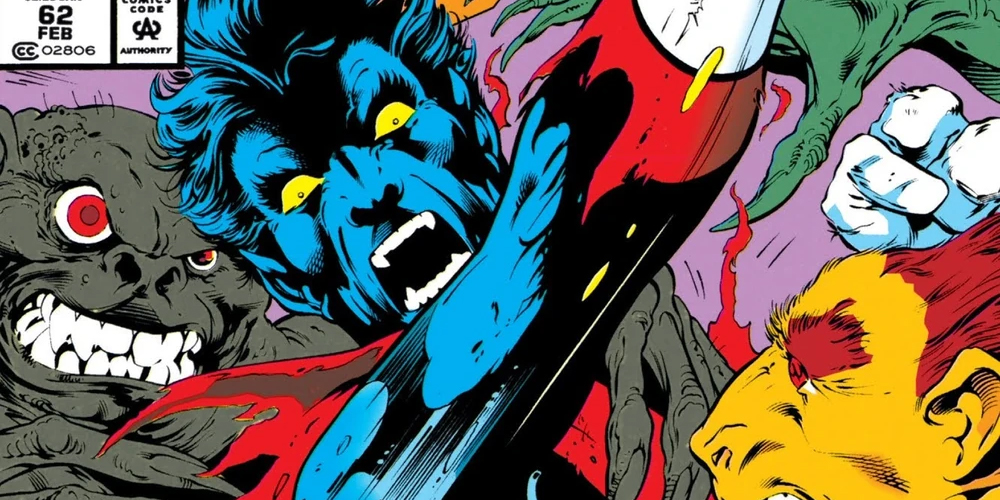Excalibur #62
“Of Birth, Death and the Confused, Painful Bit In Between”
Writer: Alan Davis
Pencils: Alan Davis and Mark Farmer
Inks: Mark Farmer
Colours: Joe Rosas, Dana Moreshead, Michael Thomas
Letters: Chris Eliopoulos
Editor: Terry Kavanagh
Original publication date: February 1993
We’re in (and on!) Cloud Nine talking Warpies, Warpies, and more Warpies in Excalibur #62, “Of Birth, Death and the Confused, Painful Bit In Between,” with educator, scholar, and expert in posthuman science fiction, Dr. Clare Wall! We explore whether superheroes are posthuman (or transhuman, or metahuman) and talk through different types of monstrosity plus whether Alan Davis’ monsters are too cute to be scary. We also talk about Beetroot—poor, beloved Beetroot, and the melodramatic context and implications of his tragic tale.
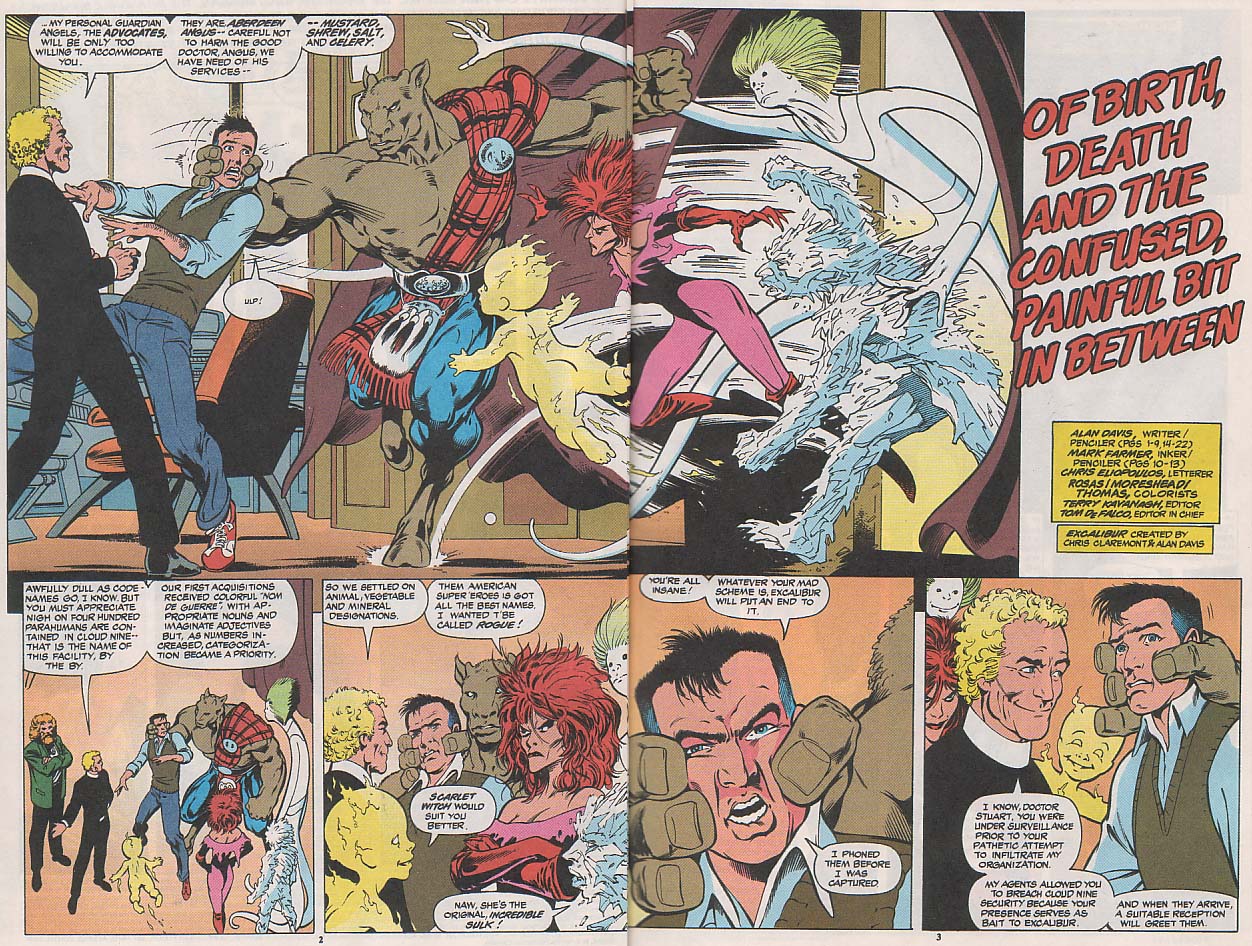
On defining posthumanism:
“Critical posthumanism critiques anthropocentrism in culture by decentering it and challenging the assumption that humans are the only ones with agency, or the only agents who matter.” -Clare
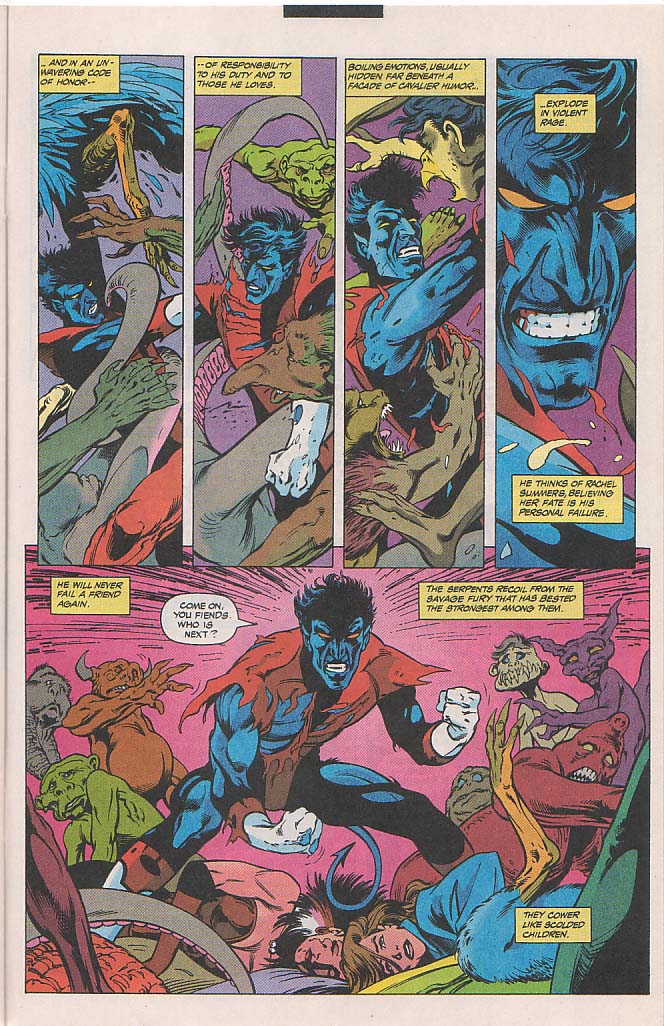
On superheroes vs posthumanism:
“Superhumans are sometimes at odds with posthumanism in the sense that, their names and stories imply superiority and elitism. They’re not beyond human, they’re better than human, even at a genetic level through mutation. That can be problematic.” -Clare

On poor Beetroot:
“The Beetroot segment plays on universal human empathy. It’s there to humanize the Warpies and give a sense of stakes. Without Beetroot’s story, the larger story doesn’t work at all.” -Andrew
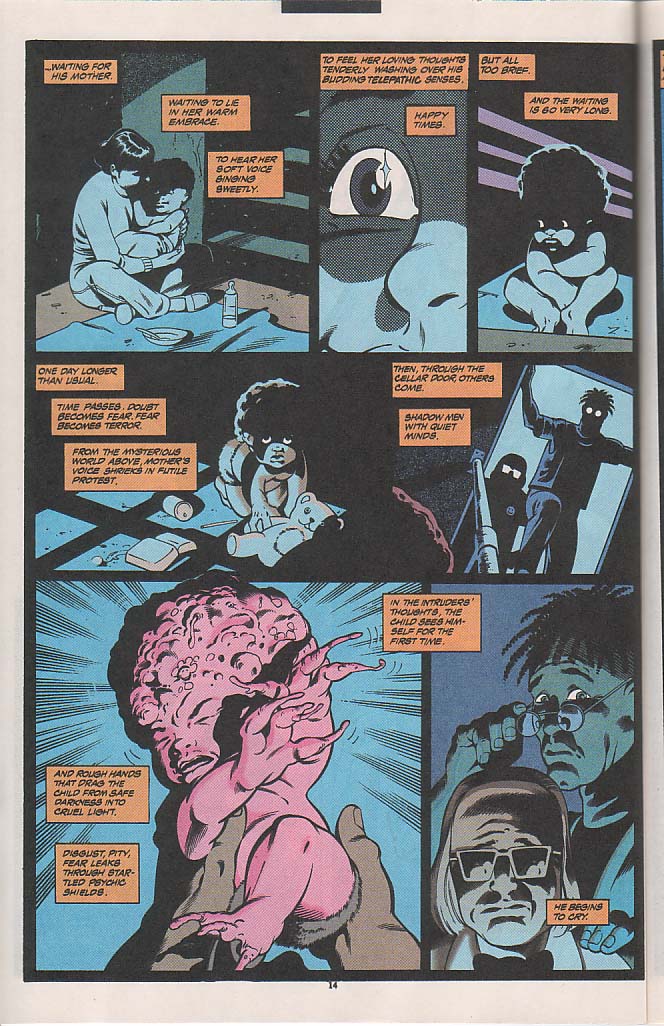
On different differences:
“Exploring different types of monstrosity and our reactions to them can be a productive thought experiment regarding which types of difference we view as desirable or scary, how, and why.” -Anna
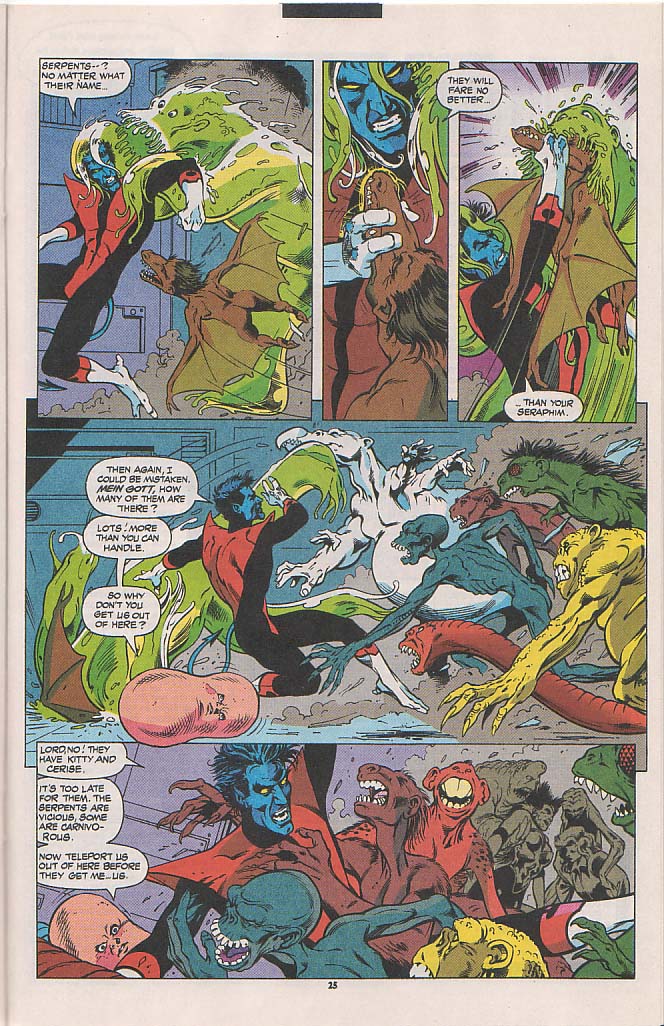
On more monstrous monsters:
“Monsters are often monstrous because they betray rules of symmetry. You see that with the Serpents. They have mouths that are too big, or eyes that are different sizes, or they combine too many different types of difference, like the bat-pterodactyl kid with human hair.” -Anna
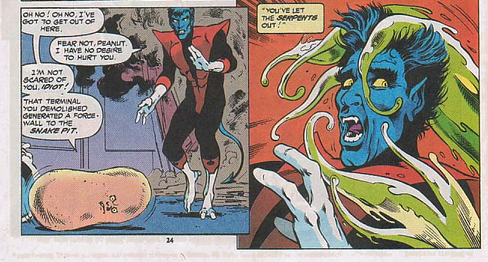
On posthuman anxieties:
“The serpents are an interesting display of posthuman anxieties. They embody fears of atavism and devolution. The fact they’re presented as uncontrollable and locked away presents them as less than human.” -Clare

On Kurt letting loose:
“Seeing Kurt let loose is fun and interesting. What I don’t like is how this release is linked, through the captions, to sexual repression. Since when is Kurt repressing anything? He was shamelessly making out with Cerise for seven minutes at a party in front of everyone, like, last week.” -Anna

On Kurt’s regression:
“The cover marks Kurt as inhuman and specifically animal. He’s snarling, his fangs are exposed, his yellow eyes have pupils that are just a single dot, and then there are other monsters tearing off the clothes that mark him as human, exposing his blue fur.” -Clare

On questionably named horses:
“I’ve never personally had the desire to name a pet after a dead friend, who was my sidekick, who I loved, who died tragically in my arms, but I’m not Brian Braddock, so…” -Mav

Want more Clare Wall?
You can find her on Twitter (@Clifi_Clare).
You can also find her art on Instagram, at clarewallpaintings.
And you can find her writing on her speciality – posthuman sci-fi and climate fiction – in the essay “‘There would be monsters, some hopeful’: Viral Agencies and Mutational Posthuman Politics in Post-Millennial Science Fiction,” in the academic anthology Interrogating Boundaries of the Nonhuman: Literature, Climate Change, and Environmental Crises.
And as usual:
You can find Anna on Twitter (@peppard_anna) and on her podcast with Andrew and Michael Hancock, Three Panel Contrast (@3PanelContrast).
You can find Andrew on Twitter (@ClaremontRun).
You can find Mav on Twitter (@chrismaverick) and on his podcast, VoxPopcast (@VoxPopcast).
Enjoy!
-GGW Team

